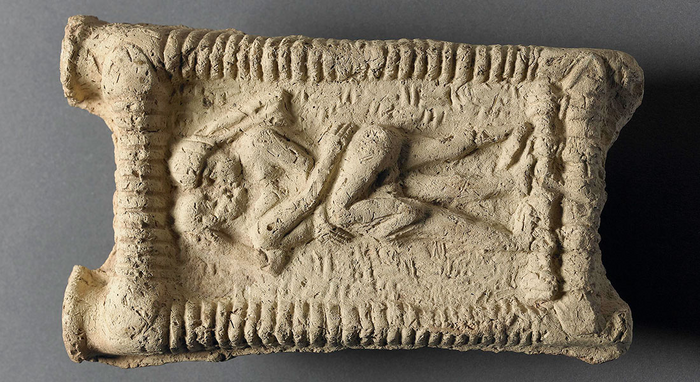
People in the ancient Near East kissed freely, caressing their romantic partners, friends and family members, according to to new research. Researchers claim to have found evidence of humanity’s earliest recorded kiss.
Until recently, the earliest evidence came from a Bronze Age manuscript from South Asia dating back 3,500 years, although the new study pushes the date of the first documented kiss to at least 4,500 years ago.
The study is based on a cuneiform script written on clay tablets from Mesopotamia, the region between the Tigris and Euphrates rivers in present-day Iraq and Syria. Thousands of scripts have survived to this day, and many describe the widespread kissing between friends and family. The study found further evidence of a physical relationship in the form of a 3,800-year-old clay model that depicts a naked couple embracing and kissing on a piece of furniture.
Read more: What ancient cave teeth can tell us about the collapse of the Bronze Age
Kissing may be too widespread to determine its origins
Although the earliest evidence of kissing is now based on these ancient Mesopotamian tablets, the researchers did not say kissing originated there.
“Kissing should not be regarded as a custom which arose exclusively in a certain region and spread from there, but [it] rather, they appear to have been practiced in multiple ancient cultures over several millennia,” says Troels Pank Arbøl, co-author and Assyriologist at the University of Copenhagen, in press release.
“A study of bonobos and chimpanzees, humans’ closest living relatives, has shown that both species kiss, which may suggest that the practice of kissing is a basic human behavior, explaining why it can be found in different cultures,” says Sophie Lund Rasmussen, co-author and research fellow at Oxford.
Did kissing spread herpes in the ancient world?
Clay documents from early Mesopotamia also include several medical texts, some of which describe an illness similar to herpes simplex virus 1, the ubiquitous disease spread in part by kissing. “Bu’shanu” caused an eruption of vesicles around the mouth, similar to today’s disease.
“If the practice of kissing was widespread and well-established in a number of ancient societies, the effects of kissing on pathogen transmission were probably more or less constant,” says Rasmussen.
Read more: Prehistoric Europeans used an extremely unpleasant drugwith
Or it may have varied slightly. Ann earlier study found evidence that kissing helped speed the spread of herpes across Bronze Age Europe as people migrated from Eastern to Western and Central Europe. As population density increases, so does the frequency of kissing and transmission of herpes.
The new arrivals may have even introduced “sexually romantic kissing” to local residents, the study said, hastening the further spread of herpes.
The disease won – now home to about two-thirds of the world’s under-50 population.

